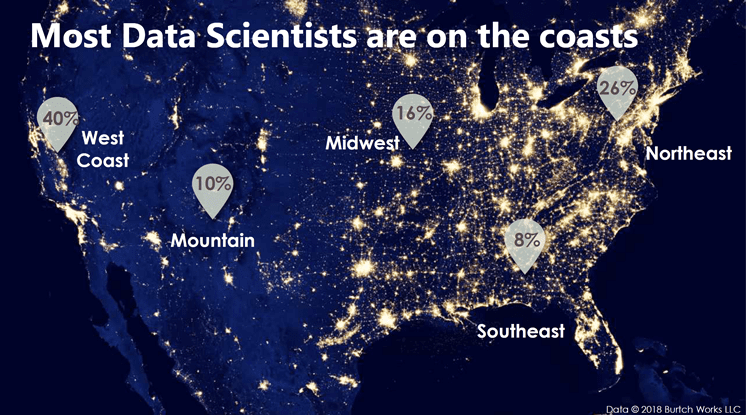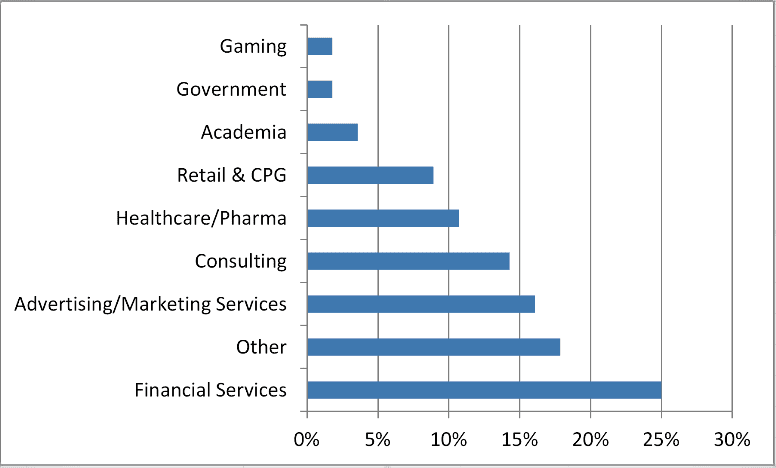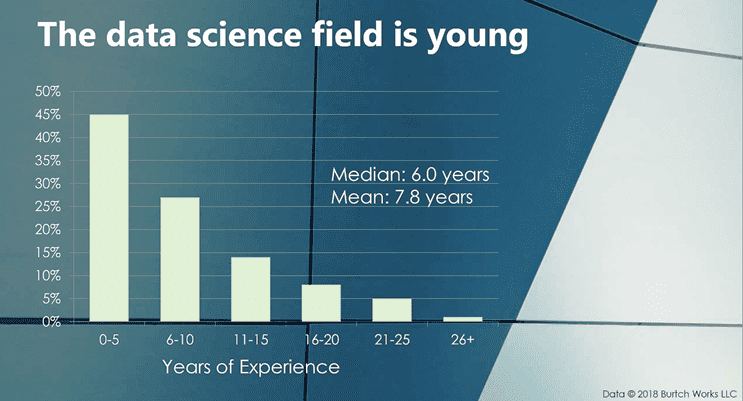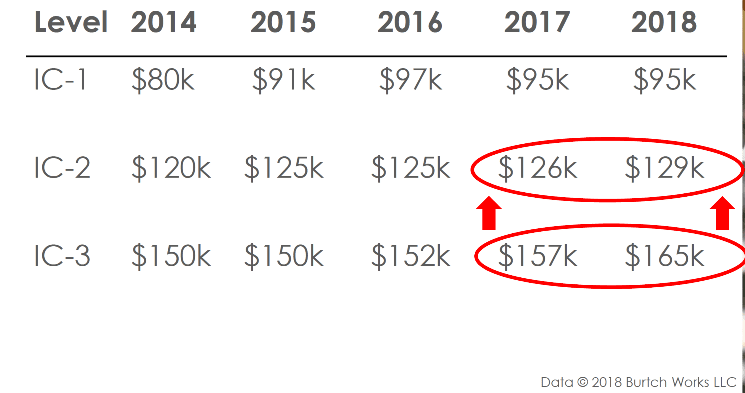Summary: The annual Burtch Works study of Data Science salaries and employment statistics is just out and things continue to look great. There are some interesting trends here you’ll want to know about.
 This week the annual Burtch Works Data Science Salary Study arrived on my desk. I look forward to this report which remains, in my opinion, the best and most comprehensive source of hard data on who we are, where we’re working, and how we’re valued.
This week the annual Burtch Works Data Science Salary Study arrived on my desk. I look forward to this report which remains, in my opinion, the best and most comprehensive source of hard data on who we are, where we’re working, and how we’re valued.
This year’s study is based on 399 responses from among the 4,000 data scientists poled. Is there bias in the sample? Maybe. It’s folks who have somehow fallen into the sites of this recruiting organization. I won’t speculate on how this may be different from the rest of us but still appreciate the depth of information and insight it provides.
What’s in a Name
One thing though. Burtch Works divides us into two groups in a way that may not be obvious. This study is about those they identify as “Data Scientist”. There’s a separate study covering “Predictive Analytic Professionals”.
This distinction which seems to be unique to Burtch Works basically says the difference is that Data Scientists work with a broader array of data, have deeper experience in a broader set of tools, and frequently have more advanced degrees. In fact in their sample 48% have Ph.Ds.
That’s clearly not typical for the entire profession. You can decide which group you belong to, but the differences in salary for example, while noticeable, are not extreme.
Everybody (Still) Loves a Data Scientist
Here’s a headline we can all love:
85.8% of Quantitative Teams Plan to Hire
in the first half of this year.
There’s an interesting corollary number here in that 77% of teams intend to expand. Where’s that other 9%? Must be churn as many of us are lured away to greener pastures. That 9% is probably backfill of existing positions now vacant.
The Middle is Filling In
The demand curve for data scientists has just been ridiculous with huge shortfalls in qualified people driving the equally huge surge in new entrants now being trained or only recently entering the job market.
The map shows we are still predominately on the coasts, but the middle is filling in. My advice to newcomers is still to first consider where you want to live. Opportunities are increasingly being spread around geographically.

Tech is still the dominant employer with about 44% of all DS, but this is beginning to look more like an historic artifact. As more and more companies have adopted advanced analytics and expanded their use, you can now find good opportunities in most any largish city.
Take away tech and you get a more accurate view of where the opportunities are.

We’re an Incredibly Young Workforce
The big salaries and the big demand continue to draw new young people into data science. Just how young? Well even among this more senior group (remember that 48% of the Burtch sample have Ph.Ds.) the median time at work (most likely fresh out of school) is 6 years – the median DS left school in 2012. I’m sure the median is lower for the less senior Predictive Analytic Professional where the dominant degree is a Masters.

Salaries are Great but No Longer Exploding
It was bound to happen. Not that supply has met demand but the early extreme escalation in salaries chasing rare skills has started to moderate.

Here’s the trend for individual contributors (IC: three different levels of experience). The average entry level salary has actually taken a couple of points to the downside, while experience is still rewarded. Could be year-to-year difference in the sample also since the same folks aren’t tracked each year.
Management salaries are actually down a point or two but still quite substantial. It’s worth noting that the most experienced individual contributors don’t have to move into management to earn at the management level.
Why this moderation? Personally I think there are a couple of factors at work. First, salary competition just got ahead of itself and is now leveling off. Entry level and experienced data scientists are difficult but not impossible to find.
Since this is a national average it also reflects the growth in the mid-west and south where salaries are not so high. Still, as Burtch Works points out, average regional salaries are beginning to close.
- West Coast $137K
- Mid-US $120K
- Northeast $133K
Once again, my guess is if you take Tech out of the mix, these would look even closer. Burtch Works says the Tech premium is now only about 4%.
Some Other Trends Here
There are some other trends called out in the report that agree with my personal observations and are important to the dynamics of our business.
Results Count: It’s about a $3 Million per year investment for a company to support a data science team of 12. Those costs are certainly high enough to make management look for bottom line results. This continues to be a major driver behind the use of increasingly automated ML tools that allow fewer data scientists to do the work of many only a year or two ago.
Skills Count: It’s no secret that the tools and techniques in our work are evolving fast. There’s no treading water here. After you get out of school you need to be a life-long-learner to keep even with developments. This counts for management as well where you need to be able to train and mentor. That means continuing to be hands-on with the tools even if you’re management.
No Unicorns: It’s been years since there was any such beast as a general purpose data scientist that could know everything and do everything. Yes, once it was like the early days of PCs where you needed to know programming, operating systems, and probably even built your own rig. No longer.
While specialization is becoming the norm, it’s more along the line of the demands of the business models (e.g. ecommerce needs recommenders and web log analysis, financial services needs risk and fraud skills, retailers both service and goods need customer propensity).
There’s no bad news here. Demand and opportunity remain strong and increasingly located where you might actually want to live. There’s lots more detail in the Burtch Works study. I encourage you to read it in depth and also watch for their sister study on Predictive Analytic Professionals.
Other articles by Bill Vorhies
About the author: Bill Vorhies is Editorial Director for Data Science Central and has practiced as a data scientist since 2001. He can be reached at:
